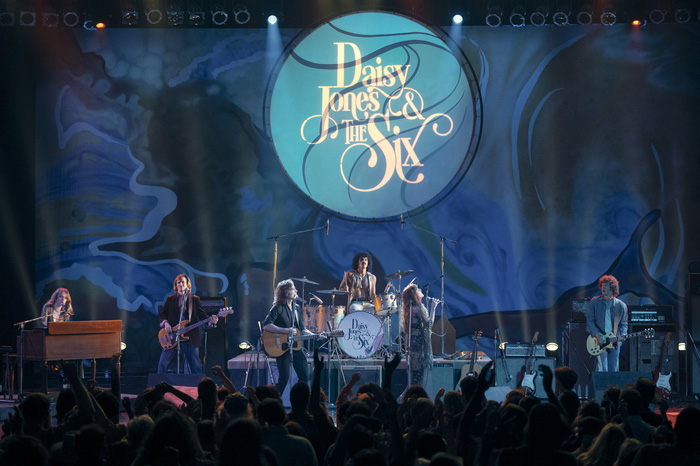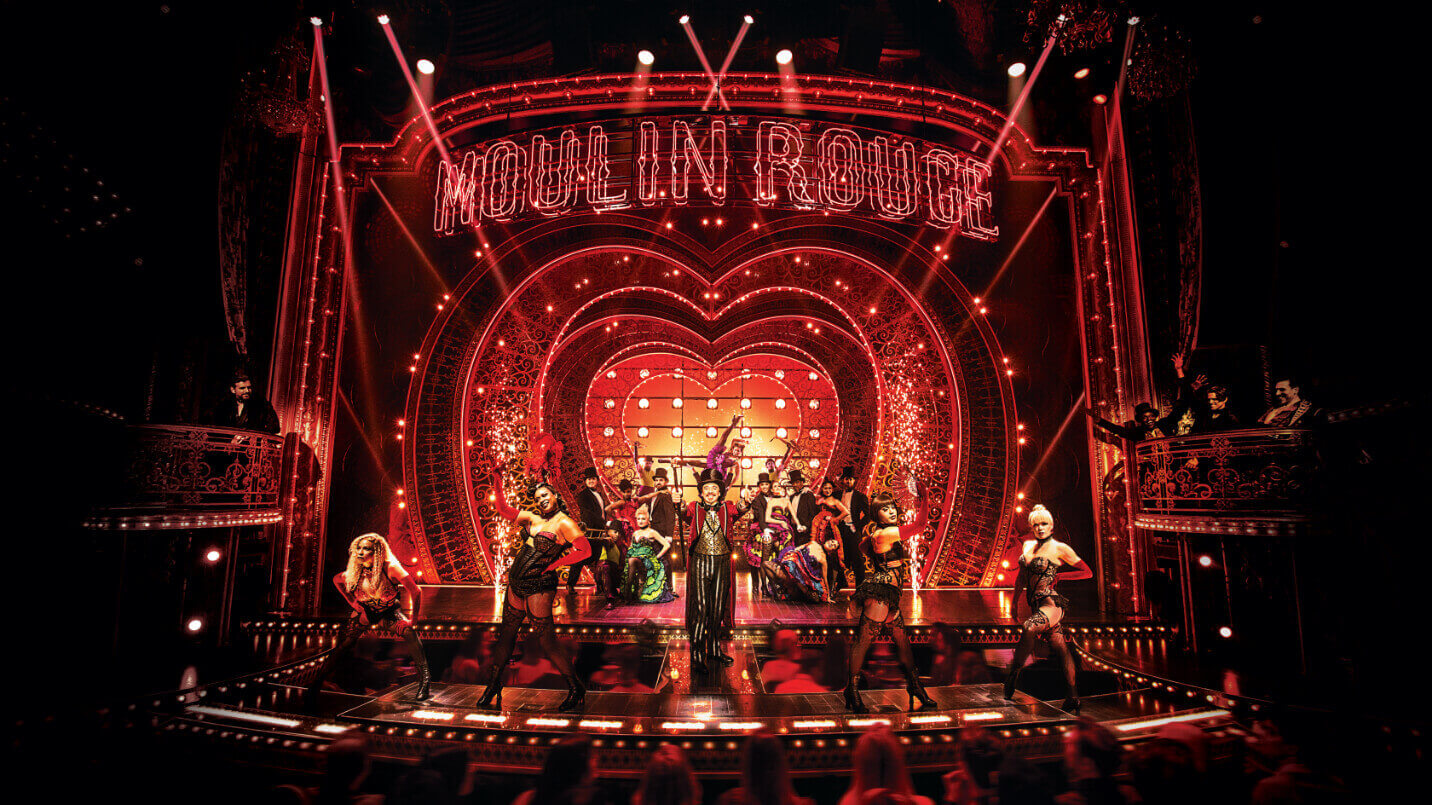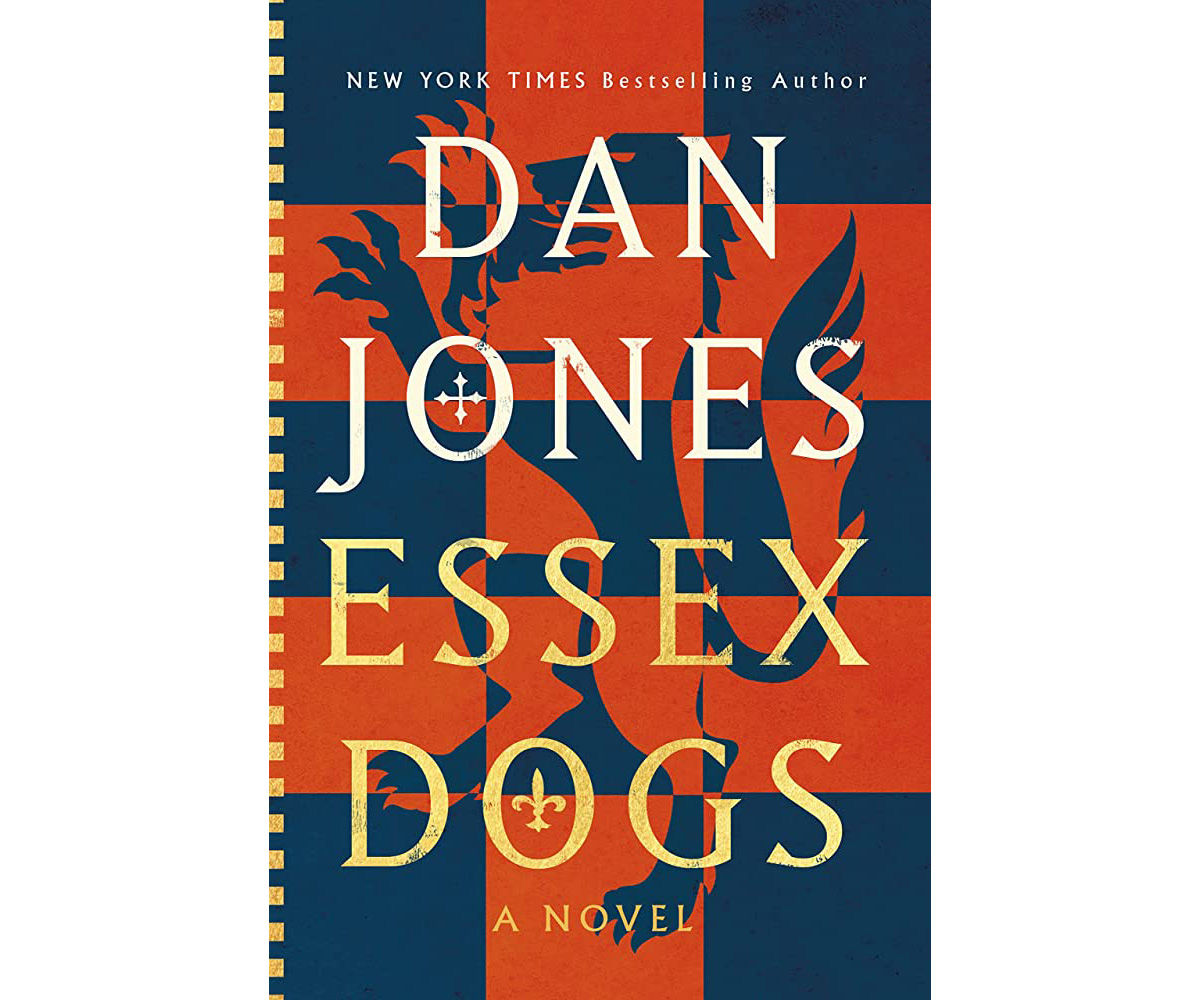TV review: ‘Daisy Jones & The Six’ sings love letter to ’70s but misses beat on nuance

The cast of “Daisy Jones & The Six perform on a stage in front of a blue-toned backdrop. The Amazon Prime Video series released its last two episodes on Mar. 24. (Courtesy of Lacey Terrell/Prime Video)
“Daisy Jones & The Six”
Created by Scott Neustadter and Michael H. Weber
Amazon Prime Video
Mar. 24

By Sanjana Chadive
March 25, 2023 4:16 p.m.
Warning: Spoilers ahead.
“Daisy Jones & The Six” found its rhythm – though it didn’t always succeed at staying on the beat.
The Amazon Prime limited series officially concluded its run with the final two episodes released on Friday. Based on Taylor Jenkins Reid’s novel of the same name, “Daisy Jones & The Six” chronicles the rise and fall of the titular fictional rock band through documentary-style interviews interwoven with flashbacks from the past. Although the showrunners made some questionable decisions when adapting its source material, “Daisy Jones & The Six” generally succeeds as a love letter to the ever-memorable, show-stopping music scene of the 1970s.
Because of the meticulous attention given to the cinematography and costuming, viewers are instantly transported into the heart of Los Angeles in the so-called “Me-Decade.” Shots of the bustling Troubadour and Whisky a Go Go are shown sporadically throughout the earlier episodes, something any Angeleno and fervent rock enthusiast will catch. Additionally, costume designer Denise Wingate evidently dedicated much effort to recreating the fashion of the ’70s. From the beatnik coats to the bohemian dresses, Wingate opts for a historically accurate wardrobe that enhances the show’s atmosphere.
[Related: Second Take: Uncovering the washed-out, white-centered world of BookTok]
Nevertheless, not all aspects of the ’70s were captured well in “Daisy Jones & The Six.” The Vietnam War, which heavily influenced the cultural landscape at the time, was only mentioned in passing a few times in the series, which wasn’t the case in the original novel. In the book, Chuck, The Six’s original rhythm guitarist, is killed in action after being drafted. In contrast, he simply exits the band to become a dentist in the show. The choice to alter Chuck’s fate demonstrably diminished the uncertain and harrowing political and social climate of the decade.
Interspersed throughout the series are interviews of the main characters 20 years after the band’s dissolution. While this risky narrative technique could have been distracting, the seamless editing made them flow well with the overall storyline. Nonetheless, the picturization of these scenes is far from perfect. For example, keyboardist Karen Sirko (Suki Waterhouse) is wearing a rather hideous wig, and lead singer and deuteragonist Billy Dunne (Sam Claflin) somehow looks younger two decades after the main storyline. Needless to say, both of these stylistic decisions were a bit distracting at some points.
Given that “Daisy Jones & The Six” is about a band, it’s not at all surprising that the strongest element of the show is the music. Featuring powerhouse vocals from both Riley Keough and Claflin and catchy instrumentals, each song exemplifies the definition of “earworm.” Moreover, music composition, like any other art form, is time-consuming and often frustrating, as the writer usually ends up with a far different product than their original vision. For this reason, the scenes where Daisy and Billy write songs together are some of the most captivating in the series because of their accurate portrayal of a typically arduous process.
However, the series’ treatment of its protagonist left much to be desired. The weaker characterization of Daisy Jones (Keough) is not the fault of her actress, who still excels at what she is given. When adapting the novel to screen, the showrunners ended up extinguishing some of Daisy’s original fire. This change is evidenced through some of the dialogue. For instance, one of Daisy’s most memorable lines early in the book is, “I am not anyone’s muse. I am the somebody. End of fucking story.” In the show, the last sentence is completely cut out, reducing its impact in foreshadowing her character.
[Related: TV review: ‘House of the Dragon’ delivers drama but falls victim to pacing issues]
Daisy’s less fiery portrayal is also seen in the way a major event was handled onscreen. Throughout the series, Daisy struggles with alcoholism and addiction, leading to her overdose in episode eight. In the book, she wakes up alone in the bathtub after her husband places her there after finding her unconscious. Conversely, Billy finds and wakes her up in the show. This scene was much more effective in the novel, as it highlights Daisy’s autonomy in shaping her life trajectory after her near-death experience.
Undoubtedly, “Daisy Jones & The Six” is not a perfect show. Its treatment of the Vietnam War and its titular character water down some of the key messages of its source material, and for no particular reason either. Nevertheless, it still invites viewers on an unforgettable musical journey of the ’70s.
Although its pitch isn’t perfect, “Daisy Jones & The Six” still carries a memorable tune.




